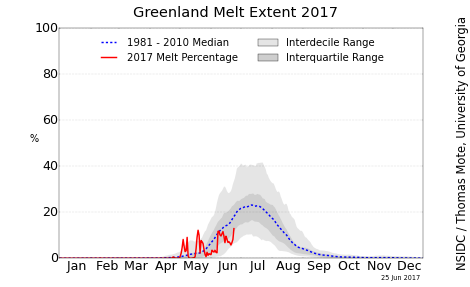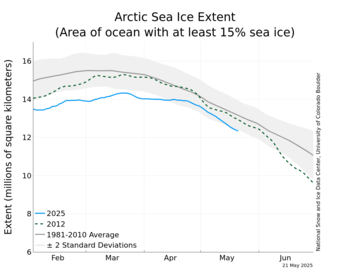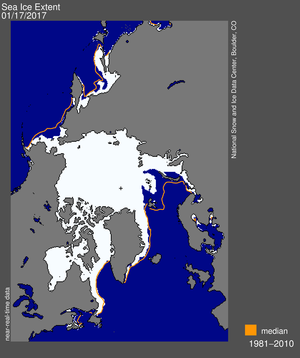Quotes from NSIDC
Arctic sea ice extent during September 2016 averaged 4.72 million square kilometers (1.82 million square miles), the fifth lowest in the satellite record. Average September extent was 1.09 million square kilometers (421,000 square miles) above the record low set in 2012, and 1.82 million square kilometers (703,000 square miles) below the 1981 to 2010 long-term average. Extent remains especially low in the Beaufort, Chukchi and East Siberian Seas. The Northern Sea Route along the Russian coast appears to still be open, but the southern Northwest Passage route (Amundsen’s route) appears to be closed.
Through 2016, the linear rate of decline for September is 87,200 square kilometers (33,700 square miles) per year, or 13.3 percent per decade. While the absolute seasonal minimum for 2016 was tied with 2007 as second lowest, the average extent for the month of September 2016 of 4.72 million square kilometers (1.82 million square miles) ends up being fifth lowest in the satellite record, behind both 2012 and 2007. This reflects the rapid growth of ice following the seasonal minimum recorded on September 10.
The winter of 2015/2016 was extremely warm over the Arctic Ocean. The maximum sea ice extent in March set a new low in the satellite record, barely beating out March 2015. Extent for the month of March as a whole ended up second lowest on record. In April, problems with the F-17 sensor forced a temporary cessation of sea ice updates until data from the newer F-18 satellite could be brought online. Data from other sources documented that during this time, ice was still tracking very low. The months of May and June set more record lows in ice extent.
Age is another indicator of the state of sea ice because older ice is generally thicker ice (Tschudi et al., 2016). As mentioned in previous posts, there has been an overall decline in ice age, particularly the oldest ice types—ice that has been in the Arctic for more than four years. Near-real-time updates (which are preliminary) indicate that at this year’s minimum, only 106,000 square kilometers (41,000 square miles) of 4+ year old ice remained, or 3.1 percent of the total ice extent. This is in stark contrast to the mid-1980s when over 2 million square kilometers (33 percent, or 772,000 square miles) of the summer minimum extent was composed of old ice that had survived at least four summer melt seasons.
PS: no adult says :"liar, liar, pants on fire".



 you see that over the last 4 years, Greenland ice is expanding >>>>
you see that over the last 4 years, Greenland ice is expanding >>>>

